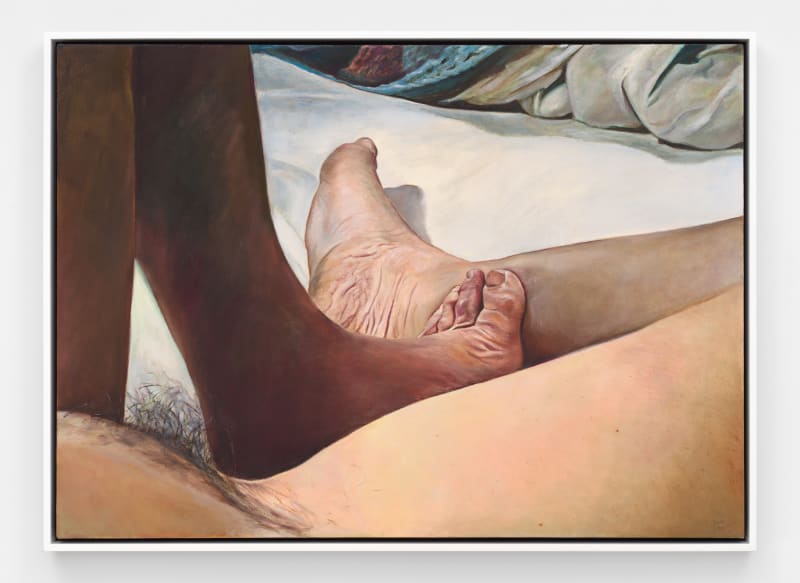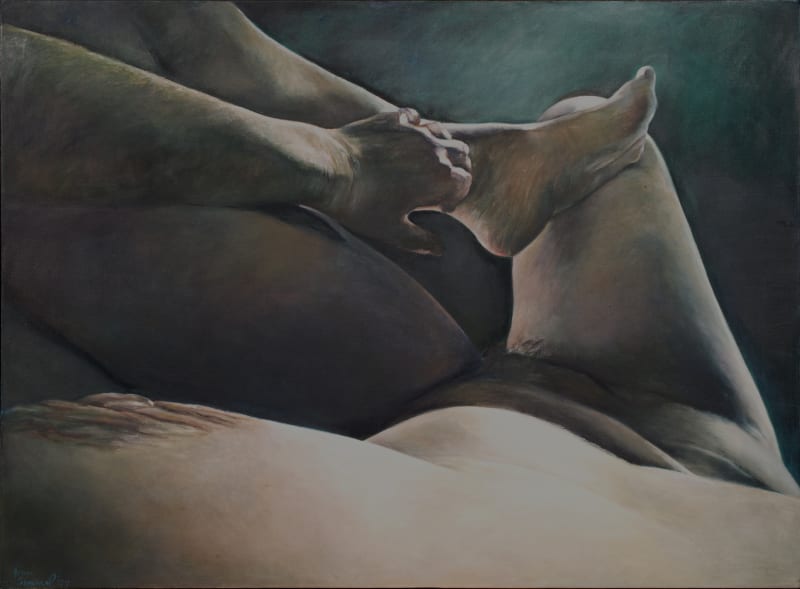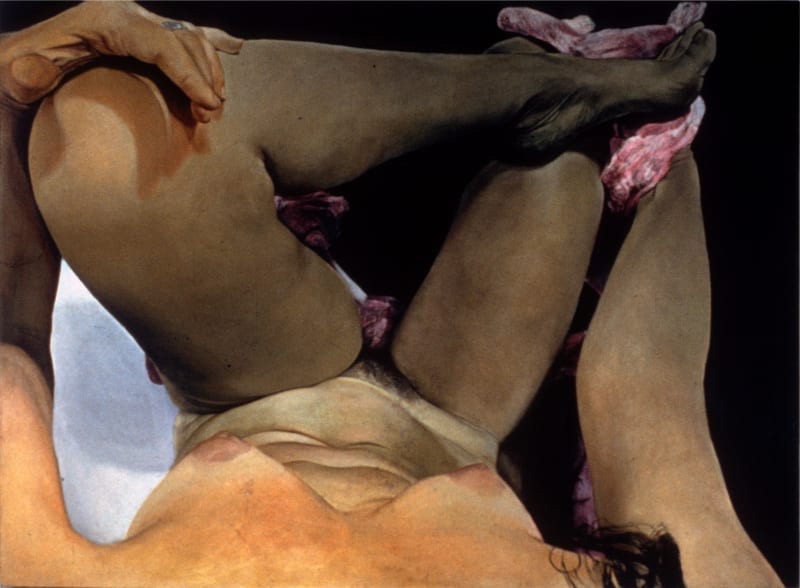1974 marked a pivotal moment in Semmel’s artistic development and her interest in challenging the male gaze of Western painting and popular culture. Adopting her body as the subject of her work, she began her Self Image series (1974—79). In these monumental compositions, she painted herself, shifting the point of view from outside of the canvas as the viewer to a simultaneous observer and subject position. Semmel explains this key transition as an attempt to capture “the feeling of self, and the experience of oneself.”
Employing photography as the first step of her process, she positioned the camera lens towards her own body, framing her figure below her head. Painted in a realist style—forgoing idealization—the resulting works are notable for their formal complexity. Ultimately, as Semmel writes, in her Self Image paintings she was trying to find “a way of reimagining the nude without objectifying the person … [using my own body] made it clear that the artist was female and undercut the stereotypes of male artist and female muse. I wanted to subvert this tradition from within.”




